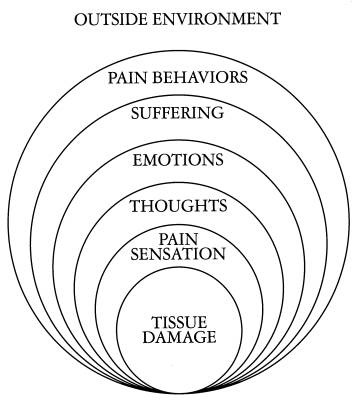Training the Obese Client: Part Two
Dr. Arya Sharma, a doctor who specializes in the medical treatment of obesity (and also right here in Edmonton!!), had a great blog post on the effects of pain and obesity. Essentially, those who were morbidly obese patients with osteoarthritis tended to catastrophize their pain to a greater extent, feel pain in a more extreme manner, and result in more binge eating and less feelings of self-control about their eating than people with normal or even overweight osteoarthritis, and also tended to reach for more of the high-sugar high-fat foods to cope with it.
 Imagine for a few seconds that you’re a client carrying an extra hundred pounds or two, and your knees start aching from the workouts your crazy trainer put you through. Most people wouldn’t bat an eye, but for whatever reason, you make it out to be worse than it is, and reach for the high-sugar high-fat foods. What this means is that if you take a client through a ball-bustingly hard workout, they are going to feel the soreness much worse than a normal weight individual, and want to reach for the types of foods they really shouldn’t be having to deal with it. Not to mention, probably not want to come back and probably avoid exercising all together.
Imagine for a few seconds that you’re a client carrying an extra hundred pounds or two, and your knees start aching from the workouts your crazy trainer put you through. Most people wouldn’t bat an eye, but for whatever reason, you make it out to be worse than it is, and reach for the high-sugar high-fat foods. What this means is that if you take a client through a ball-bustingly hard workout, they are going to feel the soreness much worse than a normal weight individual, and want to reach for the types of foods they really shouldn’t be having to deal with it. Not to mention, probably not want to come back and probably avoid exercising all together.
Step Three: Assessment
There are very few methods of measuring body composition effectively in the obese client. As the layer of subcutaneous fat tissue increases, the sensitivity of the different measurement devices tends to decrease, meaning the measurements become less accurate as the body fat increases. This means Johnny Bench-press trying to use the skinfold calipers (on the wrong sites, I might add) will usually get a wrong measurement that won’t tell the client if they’re losing weight in the right direction or not.
So how do we assess the obese client? Well, the best measurement is the simplest one to take:
Body weight
Nothing is going to tell you if they are losing weight better than the scale, regardless of how imprecise it may be. If someone is clocking in at over 300 pounds, there’s no need to see what their lean body mass is until they get down under 250 pounds, so just go by weight and tape measurements to get an idea of what their progress is and where the weight is coming off.
Getting a feel for their cardio capacity, as well as movement capabilities will be important before starting a program. Take them through a submaximal cardio test to see where their thresholds are, and then see if they can perform some basic movements like a squat, push, pull, and a lift. Once they show you what they can do, tailor a program around their capabilities, while also beginning low enough and being progressive enough to let them feel comfortable that they can complete the workouts.
Step Five: Warmups
I know a lot of trainers and strength guys will probably give me hell for this, but I don’t think obese clients should warm-up for more than 5 minutes. The main reason is that elongating the warm-up will act more like a cardio workout and fatigue them before they begin their actual working sets. Also, foam rolling, stretching, mobility drills and all that jazz will be less than effective than simply focusing on getting them moving. Plus, ever use the roller when you’re REALLY tight? Imagine pressing down with twice the body weight!! That’s gonna suck!!! Just spend 5 minutes walking on the treadmill or riding a stationary bike. That’s all you’ll need.
Step Six: Time to Get Moving
Each workout program should focus on Five basic movements:
Squats, lifting patterns, pushing patterns, pulling patterns, and walking
Make the goal of the workouts consistency, working on maintaining a target zone heart rate from start to finish, but allowing for times to rest and catch their breath as needed. Workouts should not focus on anaerobic metabolism at the outset, but build into it over time.
Full range of motion should not exist when training a client hauling around an additional sum of weight. Try going into a full deep squat while wearing a 100 pound weighted vest, and then try standing back up!! Not gonna happen.
A sample program would include exercises like:
Squats onto a high box (add weight as necessary)
Wall squats with a stability ball
Pushups on an incline surface – Smith machine, high barbell, wall
Incline pullups or rowing movements
and then walking on a treadmill or some form of repetitive cardio
2 sets of 10-15 reps each, building resistance based on capacity and tolerance of the program (Re: soreness tomorrow and number of angry emails calling you the devil).
Step Six: Be Real and Honest
An obese client on a modified diet and exercise program SHOULD lose weight every week if the programs are effective enough to produce a negative caloric balance, but not so extreme that it causes the person to slow their metabolism. If someone isn’t losing weight, there has to be a reason, either not enough burn or too much food. Find the cause and try to adjust it to keep weight loss happening.
I always find it interesting when a trainer is working with a new client who is morbidly obese, and the client says to the trainer “But I gained four pounds this week,” and the trainers response is “Oh, that’s just muscle.”
 NO IT’S NOT!!!! Why would you say something you know isn’t true? If an obese client gains four pounds of weight in a week, there’s no way in Tom Cruises version of reality that it was muscle. 4 POUNDS?? Seriously, I know elite-level body builders and neo-pubertal boys who can’t gain 4 pounds of muscle by busting their asses over the span of a week, and your client sure as hell didn’t do it by going through a weight loss workout.
NO IT’S NOT!!!! Why would you say something you know isn’t true? If an obese client gains four pounds of weight in a week, there’s no way in Tom Cruises version of reality that it was muscle. 4 POUNDS?? Seriously, I know elite-level body builders and neo-pubertal boys who can’t gain 4 pounds of muscle by busting their asses over the span of a week, and your client sure as hell didn’t do it by going through a weight loss workout.
Being honest and empathetic will help a client to know that they have to be accountable for their results, but that you’re working there with them to make sure they stay on the right path. I’ve had clients lose 50, 70, 100 pounds over time, simply because they kept coming back to the gym and working out and also following basic nutrition habits that were based on fruits, veggies, lean meats and good grains. It takes time, a lot of patience, and a lot of encouragement on a consistent basis, but the changes can be amazing.
One client, Luc, started Boot Camp this past February. With two bad knees, a previous neck surgery, and about 80 pounds overweight, he started working out because his wife was training with me and she wouldn’t quit nagging him. The first few weeks on the treadmill, I was thinking “Oh God, I hope the AED is charged up!!” But over time, he was able to improve his cardio to the point that he could begin a slow steady jog. He worked at his diet, being very meticulous about what he ate and when, and started running on his own. When outdoor season came, he was running consistently and was able to do pretty much everything I threw at him, with the odd exercise not agreeing with his knee, which I would adjust to make sure he could keep doing them. By the end of summer he’d managed to lose 65 pounds, was at the front of the pack for Boot Camp, and managed to complete a half-marathon. All this in 6 months!! Anyone can lose weight if they work at it like a job, and Luc is definitely the poster boy for this.
5 Responses to Training the Obese Client: Part Two